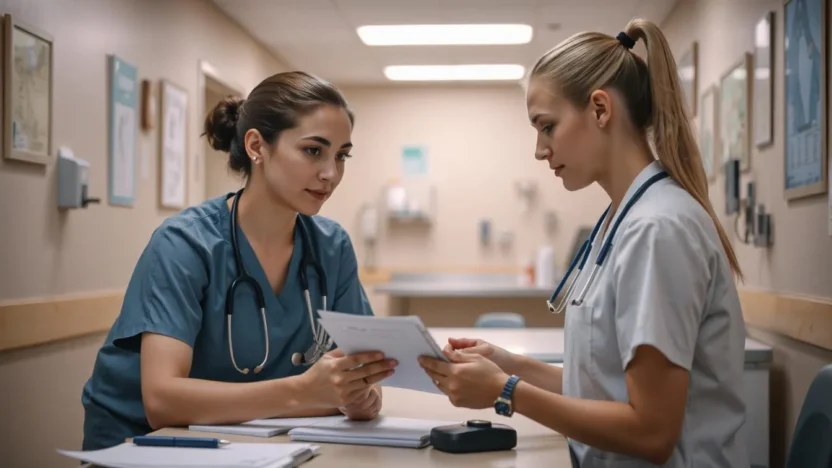Introduction: Best Practices for Nursing Documentation
In modern healthcare systems, accurate and timely nursing documentation is more than a bureaucratic necessity—it is a critical component of patient care, safety, and legal protection. Best practices for nursing documentation ensure that nurses capture and communicate essential patient information in a manner that promotes clinical accuracy, accountability, and interdisciplinary collaboration. As the healthcare landscape becomes increasingly complex, the importance of proper documentation cannot be overstated.
This article delves into the best practices for nursing documentation, exploring key principles, legal implications, electronic health records (EHRs), and strategies to enhance the quality and reliability of nursing records. Whether you are a nursing student, a practicing RN, or a healthcare administrator, adhering to best practices in nursing documentation is essential for ensuring optimal patient outcomes and professional integrity.
1. Importance of Nursing Documentation
1.1 Clinical Continuity and Communication
Nursing documentation is foundational to effective communication among healthcare teams. It ensures continuity of care by providing a clear, accurate, and chronological record of a patient’s condition, interventions, and responses. When documentation is thorough and timely, it minimizes errors, supports clinical decision-making, and allows multidisciplinary teams to deliver coordinated care.
1.2 Legal and Ethical Protection
Nursing documentation serves as a legal record that can be used in court to defend care decisions. According to the American Nurses Association (ANA), precise documentation can protect nurses from allegations of malpractice or negligence. Courts and legal teams frequently rely on nursing notes to reconstruct the sequence of events during litigation. Therefore, clear, objective, and factual entries are essential.
2. Principles of Effective Nursing Documentation
2.1 Accuracy and Objectivity
Documentation must reflect actual events, observations, and patient interactions without assumptions or subjective language. Avoid terms like “appears to be” or “seems.” Use specific, measurable language—for example, “Patient reports pain 8/10 at 1400 hours” instead of “Patient in pain.”
2.2 Timeliness
Timely documentation is critical. Entries should be made as close to the time of the event as possible. Delayed entries must be clearly labeled with the time the event occurred and the time of the documentation.
2.3 Completeness
Incomplete documentation can lead to gaps in patient care. Nurses must record all aspects of the nursing process, including assessments, diagnoses, interventions, patient responses, and evaluations. Omissions can compromise patient safety and legal credibility.
2.4 Consistency and Standardization
Use of standardized nursing terminologies such as NANDA, NIC, and NOC improves clarity and facilitates data sharing across systems. Institutions should implement consistent formatting and terminology to reduce ambiguity.
3. Electronic Health Records (EHRs) and Documentation
3.1 Advantages of EHRs
The integration of EHRs into healthcare has transformed nursing documentation. Benefits include:
3.2 Challenges with EHRs
Despite their advantages, EHRs also present challenges:
3.3 Best Practices for EHR Documentation
To address these concerns, nurses should:
4. Legal Considerations in Nursing Documentation
4.1 Avoiding Legal Pitfalls
Poor documentation is one of the most common causes of legal action in nursing. Risky documentation practices include:
4.2 Documentation and Informed Consent
Nurses play a role in documenting that patients received appropriate education and consent. For example, recording that the patient was informed about a procedure, understood the risks, and voluntarily signed the consent form is crucial.
4.3 Incident Reporting
Accurate documentation of adverse events, errors, or unusual occurrences is essential. Incident reports should be factual, objective, and free from speculation. They are typically filed separately from the patient’s medical record but referenced when appropriate.
5. Best Practices for Nursing Documentation in Specialized Settings
5.1 Acute and Critical Care
In high-acuity environments, real-time documentation is critical. Using tools like bedside charting and voice recognition software can improve accuracy without delaying care.
5.2 Long-Term Care
In long-term care settings, documentation focuses on gradual changes over time. Daily notes should capture baseline status, any deviations, and interventions. Compliance with federal regulations (e.g., MDS documentation) is particularly important.
5.3 Home Health and Community Nursing
Documentation in community settings must account for environmental factors, patient compliance, and caregiver involvement. Mobile EHR platforms have become increasingly important in these settings to facilitate real-time data entry and coordination.
6. Strategies to Improve Nursing Documentation Skills
6.1 Continuing Education
Ongoing training in documentation standards helps nurses stay updated with evolving best practices. Workshops, certifications, and online modules can reinforce knowledge of legal requirements and institutional policies.
6.2 Peer Review and Feedback
Implementing peer audits of documentation allows nurses to learn from one another and maintain high standards. Constructive feedback fosters a culture of accountability and professional growth.
6.3 Time Management and Workflow Optimization
Efficient time management techniques, such as clustering care and using checklists, can free up time for documentation. Streamlining workflows reduces the likelihood of rushed or omitted entries.
6.4 Clinical Decision Support Systems (CDSS)
Integrating CDSS into EHRs can prompt nurses to include key data points and flag inconsistencies or missing information, improving both quality and compliance.
7. Ethical Considerations in Nursing Documentation
7.1 Confidentiality and Privacy
Respect for patient confidentiality is a core ethical principle in nursing. Documentation should avoid identifying information in unsecured settings and comply with HIPAA standards.
7.2 Truthfulness and Integrity
Ethical documentation reflects the nurse’s professional integrity. Falsifying data, omitting important details, or documenting care not provided violates nursing codes of ethics and can lead to disciplinary action.
8. Case Studies: Impact of Documentation Quality
8.1 Case Study 1: Positive Outcome
In a busy emergency department, a nurse accurately documented a patient’s allergy to penicillin. When the patient later returned unconscious and unable to communicate, this documentation prevented the administration of a contraindicated antibiotic, likely saving the patient’s life.
8.2 Case Study 2: Legal Repercussion
A nurse failed to document an observed change in a patient’s neurological status and delayed notifying the physician. The patient later suffered a stroke. In court, the absence of documentation undermined the nurse’s defense and led to a malpractice ruling.
9. Future Trends in Nursing Documentation
9.1 Artificial Intelligence (AI) and Automation
AI is being integrated into EHRs to assist in predictive analytics and automated note generation. This has the potential to reduce documentation burdens while enhancing data accuracy.
9.2 Voice-Activated Documentation
Voice technology allows nurses to document on the go, improving both speed and accuracy. Coupled with AI, these tools may represent the next frontier in documentation efficiency.
9.3 Interoperability and Data Sharing
Greater interoperability between systems enhances the continuity of care and allows nurses to access and contribute to comprehensive patient records across different institutions.
Conclusion: Embracing Best Practices for Nursing Documentation
Nursing documentation is a cornerstone of patient care, professional practice, and legal accountability. By adhering to best practices for nursing documentation—ensuring accuracy, timeliness, completeness, and confidentiality—nurses uphold the highest standards of healthcare. Embracing technological advancements, fostering a culture of continuous learning, and understanding the legal implications of documentation further support the delivery of safe, ethical, and effective care.
As healthcare continues to evolve, so too must the practices surrounding documentation. Nursing professionals must remain vigilant, adaptable, and committed to excellence in documentation to meet the growing demands of the healthcare system and to protect the rights and well-being of their patients.



